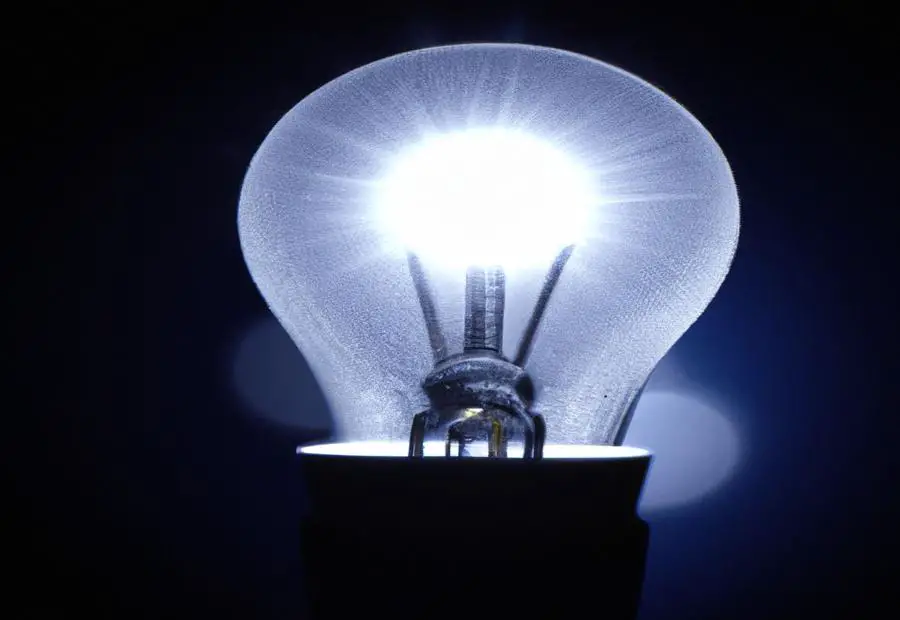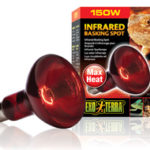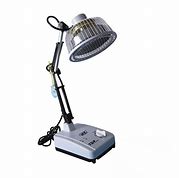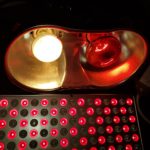Last Updated on 10 months by Francis
.jpg)
LEDs, or Light-Emitting Diodes, are widely used in various applications, from lighting to electronic displays, due to their efficiency, longevity, and versatility. Understanding the intricacies of LED technology and its performance is essential for optimizing its functionality. This article will delve into the topic of how fast an LED can turn on and off, exploring the factors that affect its turn on and turn off time, and the applications and implications of these characteristics.
Before exploring the specifics of LED turn on and turn off times, let’s first understand the basics of LED technology. LEDs are semiconductor devices that emit light when an electric current passes through them. Unlike traditional incandescent bulbs, LEDs convert electrical energy into light energy more efficiently, making them a popular choice for various lighting and display purposes.
When it comes to the turn on and turn off time of LEDs, it refers to the duration it takes for an LED to switch from a non-emitting state to an emitting state (turn on time) or from an emitting state to a non-emitting state (turn off time). These time intervals can vary depending on several factors, including forward voltage and current, junction temperature, and driving circuitry.
The forward voltage and current applied to an LED significantly impact its turn on and turn off time. Higher voltage and current levels generally result in faster switching times, while lower levels may cause delays. The junction temperature of the LED can play a role in its switching speed, as higher temperatures can affect the internal processes and response time of the LED.
Furthermore, the driving circuitry used to power the LED can influence its turn on and turn off time. The circuit design, components, and driving techniques can impact the speed and efficiency of the LED’s switching behavior.
Considering the typical turn on and turn off times for LEDs, it is important to note that these values can vary depending on the specific LED model and its characteristics. However, in general, modern LEDs have turn on and turn off times ranging from nanoseconds to microseconds, allowing for quick and precise control of the emitted light.
The ability to control the turn on and turn off time of LEDs has several practical applications. In high-speed communication systems, such as fiber optic networks, fast switching LEDs enable the transmission of data at high frequencies. In lighting control systems, LEDs with rapid turn on and turn off times can produce desired effects, such as dimming or strobing. In pulsed laser diode operations, precise control over turn on and turn off times is crucial for applications in areas such as laser rangefinders, laser printing, and scientific research.
Contents
Key takeaway:
- LED technology offers fast turn on and turn off times: LEDs have quick response times, enabling them to switch on and off rapidly. This makes them suitable for applications that require high-speed communication, precise lighting control, and pulsed laser diode operation.
- Factors influencing LED turn on and turn off times: The turn on and turn off times of LEDs are affected by factors such as forward voltage and current, junction temperature, and driving circuitry. Understanding and managing these factors is important for optimizing LED performance.
- LEDs have diverse applications and implications: The ability of LEDs to rapidly turn on and off has significant implications in various fields. They are used in high-speed communication technologies, lighting control systems, and even in pulsed laser diode operations.
What is an LED?
An LED, short for light-emitting diode, is a semiconductor device that emits light when an electric current passes through it. LEDs are highly versatile and efficient light sources that find applications in a wide range of electronic devices, lighting fixtures, signs, and automotive lighting. Unlike traditional incandescent bulbs, LEDs do not use a filament that can burn out. Instead, they rely on a process called electroluminescence, where the movement of electrons in the semiconductor material leads to the release of photons, resulting in the creation of light.
The advantages of LEDs are numerous. They are small in size, durable, and energy-efficient. LEDs are commonly found in televisions, computer screens, and smartphones, where they offer bright and vibrant colors. Additionally, LEDs have a long lifespan and low power consumption, making them highly desirable for various lighting applications. In terms of environmental impact, LEDs are superior to traditional light bulbs as they do not contain hazardous substances like mercury.
How do LEDs work?
LEDs, or Light Emitting Diodes, operate by converting electrical energy into light. When a current is applied to the LED, electrons from the negative terminal flow towards the positive terminal. As they traverse the LED’s semiconductor material, they unite with electron holes, releasing energy in the form of photons. This phenomenon is known as electroluminescence.
In contrast to traditional incandescent bulbs, LEDs do not employ a filament that is susceptible to burning out. Instead, they utilize a solid-state technology that grants them high durability and long-lasting performance. LEDs also possess the advantage of being highly energy-efficient, as they convert a greater amount of electrical energy into light in comparison to other lighting technologies.
LEDs operate at low voltage and low current, typically around 2 to 3 volts. The precise voltage required for an LED to emit light varies depending on the color it produces. Red LEDs have a lower voltage drop, whereas blue and white LEDs have a higher voltage drop.
To produce different colors, LEDs can be controlled by employing various types of semiconductor materials. By combining red, green, and blue LEDs in varying intensities, it is possible to create a diverse array of colors.
Understanding Turn On and Turn Off Time

Photo Credits: Infraredforhealth.Com by Daniel Sanchez
Understanding turn on and turn off time is crucial when it comes to LEDs. Here are a few key points to consider:
- Turn on time: This refers to the time it takes for an LED to reach its maximum brightness once power is applied. The turn on time for LEDs can vary depending on the specific model and manufacturer.
- Turn off time: This refers to the time it takes for an LED to completely shut off once power is removed. Similar to turn on time, the turn off time can also vary depending on the LED.
- Factors affecting turn on and turn off time: There are several factors that can influence the turn on and turn off time of an LED. These include the size and construction of the LED, the materials used, and the driving circuitry.
Understanding the turn on and turn off time of LEDs is important for various applications, such as in lighting systems and electronic displays. It allows for better synchronization and control, ensuring optimal performance and functionality.
If you are working with LEDs, here are a few suggestions to keep in mind:
- Check the datasheet: The manufacturer’s datasheet will provide specific information about the turn on and turn off time for the LED you are using. This will help you make informed decisions and choose the right LED for your application.
- Consider application requirements: Different applications may have different requirements for turn on and turn off time. Consider the specific needs of your project and select an LED that meets those requirements.
- Test and evaluate: It’s always a good idea to test and evaluate the performance of LEDs in your application. This will give you a better understanding of the turn on and turn off time in real-world conditions.
What is Turn On Time?
The turn on time of an LED refers to the amount of time it takes for the LED to fully illuminate once power is applied. This is an important factor to consider when using LEDs for various applications.
Turn on time for LEDs is typically very fast, often in the range of nanoseconds to microseconds. This quick response time allows LEDs to be used in high-speed communication systems, where fast switching times are crucial for transmitting data efficiently.
The turn on time of an LED can be affected by several factors. One factor is the forward voltage and current applied to the LED. Higher voltages and currents can result in faster turn on times. Another factor is the junction temperature of the LED. Higher temperatures can lead to slower turn on times. Additionally, the driving circuitry used to power the LED can also impact the turn on time.
Understanding the turn on time of an LED is important for applications such as lighting control and pulsed laser diode operation. In lighting control, fast turn on times allow for precise control of the lighting levels. In pulsed laser diode operation, the fast turn on time ensures accurate timing of the laser pulses.
What is Turn Off Time?
The turn off time refers to the amount of time it takes for an LED to completely stop emitting light after the power is turned off. It is an important characteristic to consider when working with LEDs, especially in applications where precise control of the light output is required.
The turn off time of an LED is influenced by several factors. Firstly, the construction and materials used in the LED can affect the speed at which the light output diminishes. LED designs that incorporate efficient components and high-quality materials tend to have shorter turn off times.
Secondly, the driving circuitry plays a role in the turn off time. The circuitry controls the current flowing through the LED, and a well-designed circuit can minimize the time it takes for the LED to turn off completely.
Additionally, the turn off time can be affected by the temperature at the junction of the LED. High temperatures can slow down the response time of the LED, prolonging the turn off process.
Understanding the turn off time of an LED is crucial in applications that require fast switching or precise timing. For example, in high-speed communication systems, LEDs with shorter turn off times allow for faster data transmission. Similarly, in lighting control systems, LEDs with quick response times enable accurate adjustment of brightness levels.
What is Turn Off Time?
Factors Affecting LED Turn On and Turn Off Time
When it comes to the turn on and turn off time of LEDs, various factors come into play. In this section, we’ll dive into the elements that influence this crucial aspect. From forward voltage and current to junction temperature and driving circuitry, each sub-section will shed light on different aspects that contribute to the speed at which an LED can illuminate and extinguish. So, let’s uncover the key factors behind the performance of LEDs and understand their impact on efficiency and functionality.
Forward Voltage and Current
When it comes to forward voltage and current in LEDs, it is important to understand their significance in determining the performance and efficiency of the LED.
| Significance | Forward Voltage | Forward Current |
| The forward voltage is the minimum voltage required for an LED to start conducting current and emit light. It varies depending on the type and color of the LED, typically ranging from 1.8 to 3.6 volts. | Forward current refers to the amount of current that needs to flow through the LED for it to emit the desired brightness. Exceeding the maximum forward current can lead to overheating and shortened LED lifespan. | |
| Optimum Range | The forward voltage should be within the specified range for the LED to operate efficiently and produce the intended brightness. If the voltage is too low, the LED may not light up, while if it is too high, it may lead to excessive current and overheating. | The forward current should also be within the recommended range for optimal LED performance. It is important to match the forward current within the manufacturer’s specifications to ensure efficiency and longevity. |
| Impact | If the forward voltage is too high, it may indicate a high resistance in the circuit, potentially leading to inefficiencies. On the other hand, a forward voltage lower than the specified range may result in dim or inconsistent LED performance. | Exceeding the maximum forward current can cause the LED to overheat, which can degrade its performance, reliability, and potentially lead to its failure. Using a current-limiting resistor can help regulate the forward current. |
Considering the forward voltage and current specifications ensures that the LED operates efficiently, produces the desired brightness, and maintains a long lifespan.
Junction Temperature
When it comes to LED technology, one important factor to consider is the Junction Temperature. It refers to the temperature at the junction of the LED, where the semiconductor material meets the diode. This temperature can significantly affect the performance and reliability of the LED.
| Implications of | Factual Assertion: |
| High junction temperature | Reduces the lifespan and efficiency of the LED. |
| Low junction temperature | Enhances the lifespan and efficiency of the LED. |
Optimal operation of an LED requires maintaining the Junction Temperature within a specific range. Excessively high temperatures can cause thermal degradation of the semiconductor material, leading to color shift, reduced brightness, and even failure of the LED. On the other hand, low temperatures can improve the LED’s performance and longevity.
In practical applications, it is important to consider the heat dissipation capabilities of the LED package and the surrounding environment. Ensuring proper thermal management, such as using heat sinks or adequate ventilation, can help maintain the Junction Temperature within acceptable limits and maximize the LED’s performance.
One real-life example of the impact of Junction Temperature is in outdoor LED displays. These displays are exposed to high ambient temperatures, and if proper cooling mechanisms are not in place, the Junction Temperature can rise significantly. This can result in reduced brightness and color quality of the display, compromising its effectiveness and lifespan.
Driving Circuitry
| Driving Circuitry |
When it comes to the performance of LEDs, the driving circuitry plays a crucial role. The driving circuitry, which includes components such as resistors and transistors, is responsible for controlling the current that flows through the LED.
By regulating the current, the driving circuitry ensures that the LED operates within its specified limits, preventing overcurrent and potential damage. This is essential for maximizing the lifespan and efficiency of the LED.
Moreover, the driving circuitry is also responsible for achieving the desired brightness of the LED. By adjusting the current flowing through the LED, it can be dimmed or made brighter according to the specific requirements.
In addition, the driving circuitry plays a vital role in ensuring the stability and reliability of the LED’s performance. By providing a stable power supply and protecting against voltage fluctuations, the driving circuitry helps to maintain consistent and accurate operation of the LED.
Typical Turn On and Turn Off Times for LEDs

Photo Credits: Infraredforhealth.Com by Gregory Lopez
The typical turn on and turn off times for LEDs can vary depending on the specific LED and its characteristics.
To provide an overview, here is a table outlining the typical turn on and turn off times for different types of LEDs:
| Type of LED | Turn On Time | Turn Off Time |
| Standard LED | Less than 10 nanoseconds | Less than 10 nanoseconds |
| High-Power LED | Less than 100 nanoseconds | Less than 100 nanoseconds |
| OLED | Several microseconds | Several microseconds |
| Laser Diode | Few nanoseconds | Few nanoseconds |
As we can see, standard LEDs and high-power LEDs have incredibly fast turn on and turn off times, usually less than 10 nanoseconds. OLEDs and laser diodes have slightly longer turn on and turn off times, typically in the range of microseconds or few nanoseconds.
It’s important to note that these times can vary depending on factors such as the specific LED manufacturer, operating conditions, and driving circuitry. However, these values provide a general idea of the typical turn on and turn off times for LEDs.
Applications and Implications of LED Turn On and Turn Off Time
Discover the remarkable applications and implications of LED turn on and turn off time. From high-speed communication to precise lighting control, and even in the operation of pulsed laser diodes, LEDs play a pivotal role in countless industries. Uncover the fascinating ways in which LEDs are shaping technology and transforming our world. Get ready to delve into the electrifying possibilities that lie within the realm of LED turn on and turn off time.
High-Speed Communication
High-Speed Communication is a critical application of LED technology. The fast turn on and turn off times of LEDs make them ideal for transmitting data quickly and efficiently.
- LEDs can be utilized in optical communication systems to transmit signals at high speeds. Their rapid turn on and turn off times enable them to switch on and off quickly for encoding and decoding data.
- LEDs used in fiber-optic communication can achieve high data transmission rates, reaching speeds of several gigabits per second.
- LEDs play a pivotal role in high-speed Ethernet connections, facilitating fast and dependable data transfer between devices.
- In wireless communication systems, LEDs can be employed for infrared data transmission. They are commonly found in remote controls, enabling swift and responsive communication between the remote and the device.
A true story that emphasizes the significance of high-speed communication using LEDs involves a research team developing an innovative communication system for self-driving cars. By utilizing LEDs with fast turn on and turn off times, they successfully established a reliable and high-speed wireless communication network between the vehicles. This facilitated real-time sharing of critical information, such as position and speed, leading to enhanced safety and coordination among the autonomous cars on the road.
Lighting Control
When it comes to lighting control with LED technology, there are a few important factors to consider:
- Dimming capabilities: LED lights offer excellent lighting control with their dimming capabilities, allowing for precise control of brightness levels. This is particularly useful in settings where different levels of lighting are required, such as in restaurants or theaters.
- Color temperature: LED lights come in a range of color temperatures, from warm white to cool white. Choosing the right color temperature can greatly impact the ambiance and mood of a space. For example, warm white lights create a cozy and inviting atmosphere, while cool white lights are often used in task-oriented environments.
- Energy efficiency: LED lights are highly energy-efficient, consuming significantly less electricity compared to traditional lighting sources. This can result in significant energy savings and reduced operating costs in the long run.
- Durability: LED lights have a much longer lifespan compared to traditional lighting options. This means less frequent maintenance and replacement, making them an excellent choice for lighting control systems that require minimal upkeep.
When choosing LED lights for lighting control systems, it’s important to consider the specific requirements of the space and the desired lighting effects. Consulting with a professional lighting designer or architect can help ensure that the right LED lights are selected for optimal lighting control.
Pulsed Laser Diode Operation
-
Pulsed laser diode operation refers to the operation of a laser diode that emits short bursts of laser light instead of continuous beams.
-
In various applications such as laser rangefinders, barcode scanners, and fiber optic communications, pulsed laser diodes are commonly used.
-
The operation of a pulsed laser diode involves the following steps:
-
To generate light, the laser diode is turned on by applying a voltage to its junction, causing electrons and holes to recombine.
-
The duration and frequency of the light pulses are controlled by modulating the current flowing through the laser diode.
-
During the “on” period, a coherent beam of light is emitted by the laser diode.
-
By reducing or stopping the current flow, the laser diode is turned off after the desired pulse duration.
-
The process is repeated, resulting in a series of pulsed light output.
Pro-tip: When using pulsed laser diodes, it’s crucial to consider the desired pulse duration and frequency, as well as the power requirements and cooling mechanisms to prevent overheating. Additionally, to optimize the performance of the pulsed laser diode, proper driving circuitry and modulation techniques must be employed.
Some Facts About How Fast Can an LED Turn On and Off:
- ✅ LEDs can have turn-on times in single-digit nanoseconds and turn-off times in the tens of nanoseconds.
- ✅ IR LEDs have the fastest transition times.
- ✅ Phosphor type LEDs have slower turn-on and turn-off times compared to direct emission LEDs.
- ✅ LED switching speed is influenced by factors such as inductance of the traces, junction capacitance, parasitic capacitance, LED driving topologies, and forward voltage.
- ✅ The driving circuit design plays a crucial role in achieving faster LED switching times.
Frequently Asked Questions
How fast can an LED turn on and off?
The turn-on and turn-off times of an LED depend on various factors such as LED type, circuit design, and external influences. Direct emission LEDs, including specialized UV and IR LEDs, can achieve turn-on times in the single-digit nanoseconds range, while turn-off times are typically in the tens of nanoseconds.
What factors affect LED switching speed?
LED switching speed is influenced by several factors, including the inductance of the traces, junction capacitance of the LED, parasitic capacitance, LED driving topologies, and the forward voltage of the LED. Additionally, the design of the driving circuit plays a dominant role in achieving faster switching times compared to the inherent characteristics of the LEDs themselves.
Can a linear current limiter circuit increase LED blink frequencies?
Yes, a linear current limiter circuit can be used to increase the blink frequencies of LEDs. The linear current limiter regulates the current flowing through the LED, allowing for precise control and faster switching. This can help achieve higher blink frequencies than what can be achieved by directly driving the LED without current regulation.
Is it possible to achieve faster LED blinking using hardware timers?
Yes, hardware timers can be utilized to generate even shorter pulses and achieve faster LED blinking. However, it’s important to note that the feasibility of using hardware timers for shorter pulses may depend on the specific CPU being used. Some faster CPUs might have limitations that impact the effectiveness of hardware timers for generating faster LED pulses.
What are the characteristics of phosphor LEDs compared to direct emission LEDs?
Phosphor LEDs and direct emission LEDs have different characteristics. Phosphor LEDs have slower turn-on and turn-off times compared to direct emission LEDs. Additionally, phosphor LEDs have an underlying light emitting junction that excites a phosphor coating, resulting in a broader spectrum of wavelengths. On the other hand, direct emission LEDs can emit light more directly and have faster transition times.
How fast can specialized LEDs and laser diodes achieve pulse widths?
Specialized LEDs and laser diodes have the capability to achieve very short pulse widths. Depending on the specific type, pulse widths can range from 800 picoseconds to 2 nanoseconds. These devices are designed for high-frequency applications and fast signal generation.

.jpg)
.jpg)
.jpg)
.jpg)



